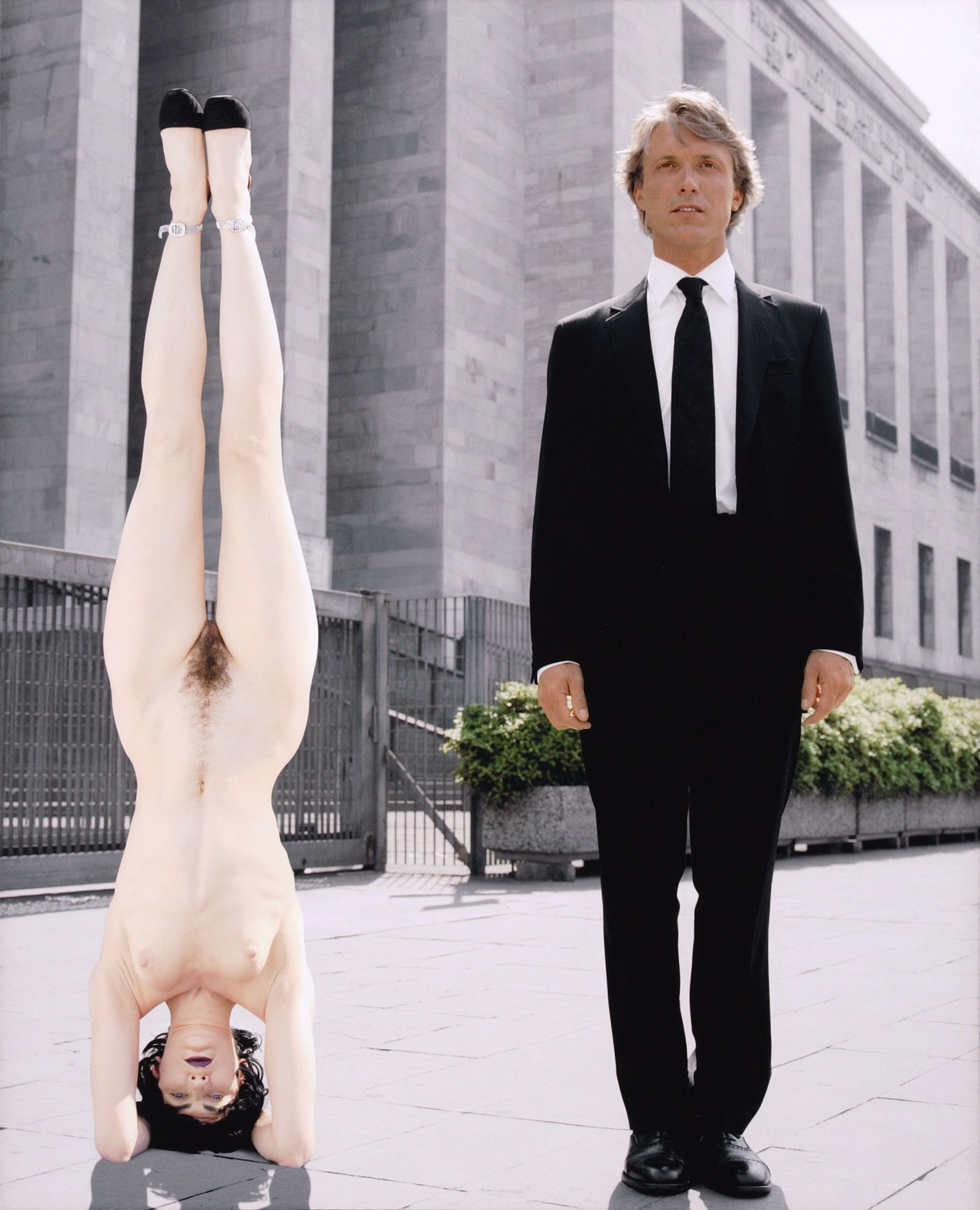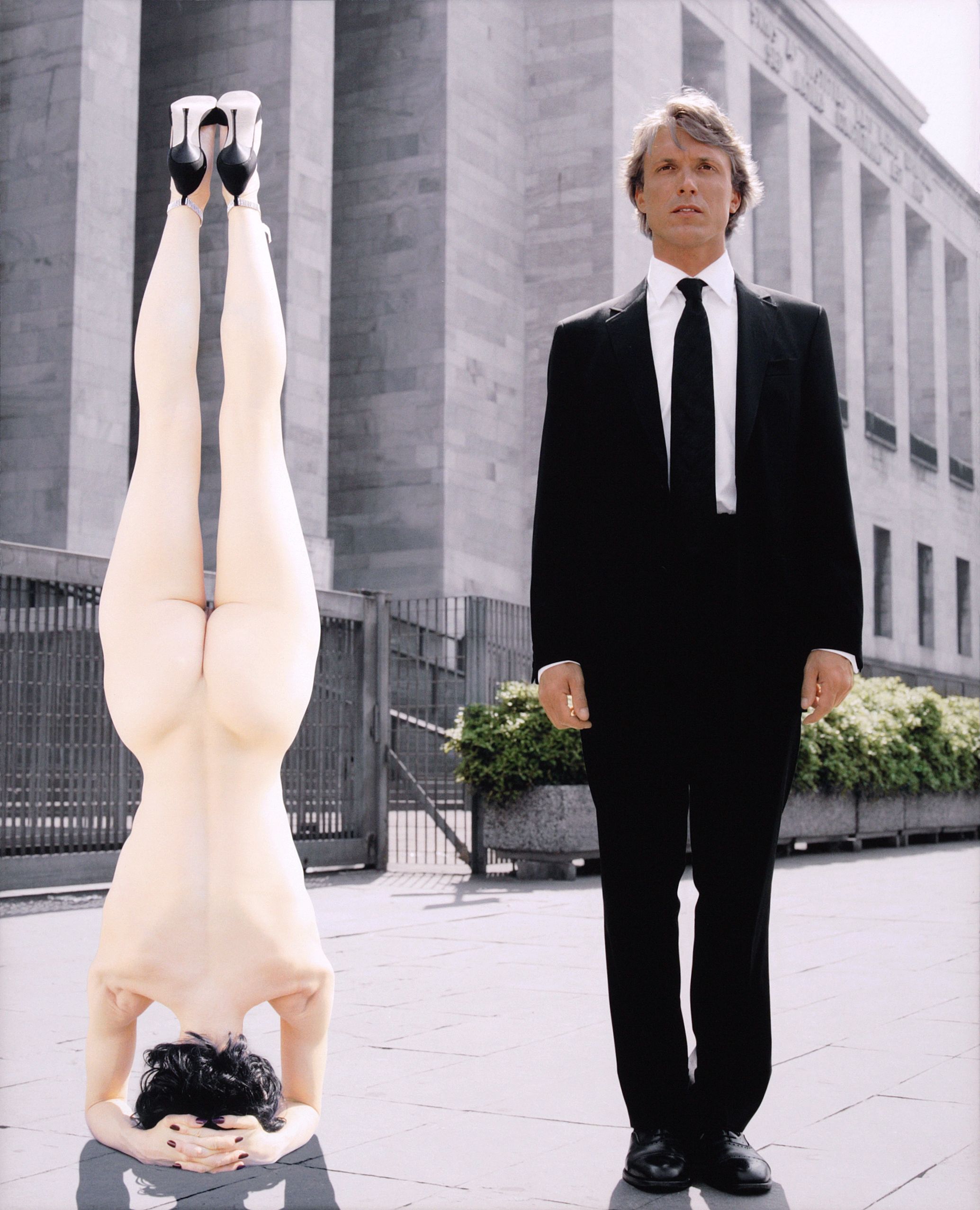Two pigment prints (digital C-print) on handmade photo paper (Sintra)
Dimensions: 61 x 51 cm each
Copy Number: 14/45
Editor: Edition Schellmann, Munich/New York
Accession Number: 1002530.1–2
Since the mid-1990s, the Italian artist Vanessa Beecroft has been known for her performances with groups of women, usually wearing only high-heeled shoes and standing in gallery and museum spaces with an expressionless gaze.1 Occasionally, she also stages groups of men, such as the members of the elite SEALs of the American Navy, who are then fully clothed. In this, she follows a tradition in art history, according to which women are usually depicted unclothed, exposed to the gaze. The performances are documented by films and photographs.
Vanessa Beecroft presents the nudity of her figures until, beyond their exposure, the respective poses or the formation of the group attract attention. The two-part work Vogue Hommes, on the other hand, is a juxtaposition of masculinity and femininity. As a staging in outdoor space, intended for photographic recording and its print reproduction, it is unusual in Beecroft's oeuvre. The work was originally created as a commission from Vogue Hommes International magazine. For the Fall/Winter 2002 issue, 33 female artists, including Vanessa Beecroft and Nan Goldin, were asked to depict their impressions of modern masculinity.2
On first viewing, one is struck by the contrast of a naked, upside-down woman and a clothed man standing to her right. Both are on a paved sidewalk in front of a building with a fascist-looking stone facade, on which an inscription can be seen only indistinctly. It is the Palace of Justice in Milan. The building is surrounded by a metal fence and washed concrete boxes with bushes.
The woman standing on her head can be seen from the front in the first picture, and from behind in the second. She is wearing a black wig and black pumps with a rhinestone band around her ankles, her eyebrows above her blue eyes are heavily accentuated, her mouth and fingernails are made up in dark purple. The man is seen in front view in both pictures and has ash blond hair and brown eyes. He is dressed in a black suit, a white shirt and a black tie as well. In addition still black leather shoes with Budapester hole pattern. Due to his tanned skin and dark clothes, the contrast with the pale female nudity appears even more striking. Does he represent an employee? In both images, everything is identical except for the altered view of the woman. A corner of the building and a bend in the fence seem to separate the two people. In Beecroft's staging, the woman does not appear vulnerable at all, despite her nudity, but rather confident and strong. Not even the unnatural position, standing on her head, makes her seem insecure. She retains her dignity despite this position, appears unimpressed by social conventions. Only the high-heeled shoes and the make-up are classic female attributes, but they lose their meaning here. The woman's charisma is altogether freer than that of the man. In the uniform of the employee or businessman fixed in his role, he seems to have fewer opportunities for development. In contrast to other depictions of naked women with clothed men, the female strength is brought to the fore here.
Vanessa Krout
1 Cat. of the exhib. Vanessa Beecroft. Performances 1993-2003, ed. by Marcella Beccaria. Museo d'Arte Contemporanea, Castello di Rivoli Turin, Milano 2003; cat. of the exhibition. Vanessa Beecroft. Photographs, Films, Drawings, ed. by Thomas Kellein, Kunsthalle Bielefeld, Ostfildern-Ruit 2004.
2 David Linke, Feminine Interpretations. New Issue of Vogue Hommes International, in: Daily News Record, 16. September 2002.

